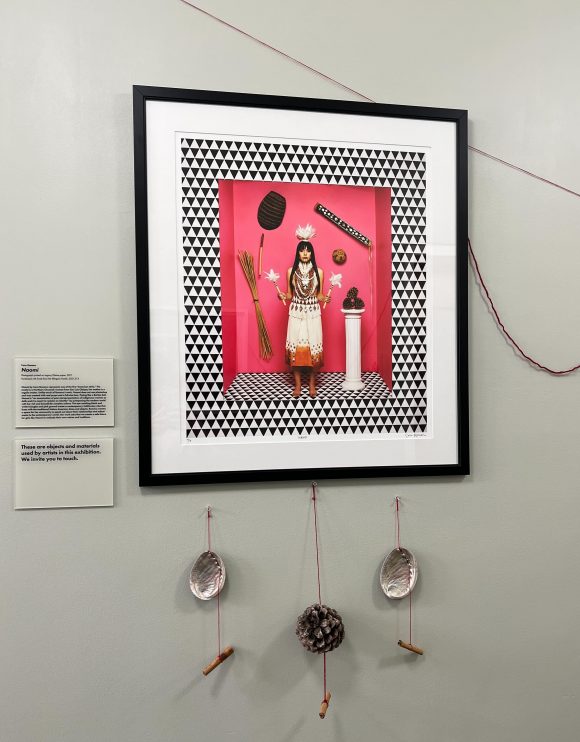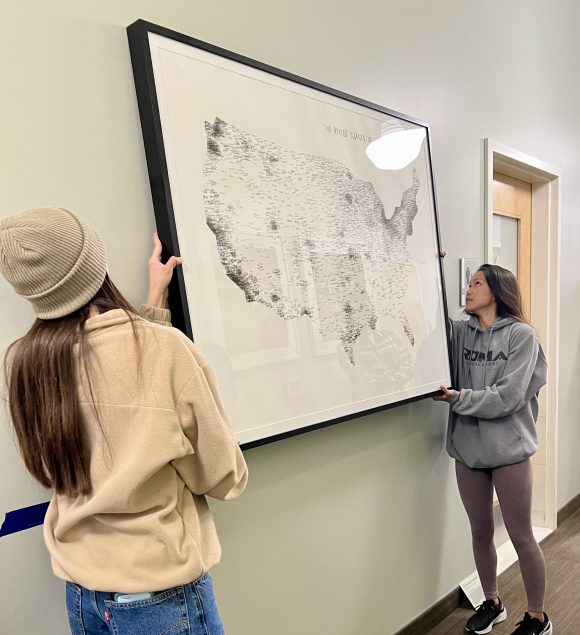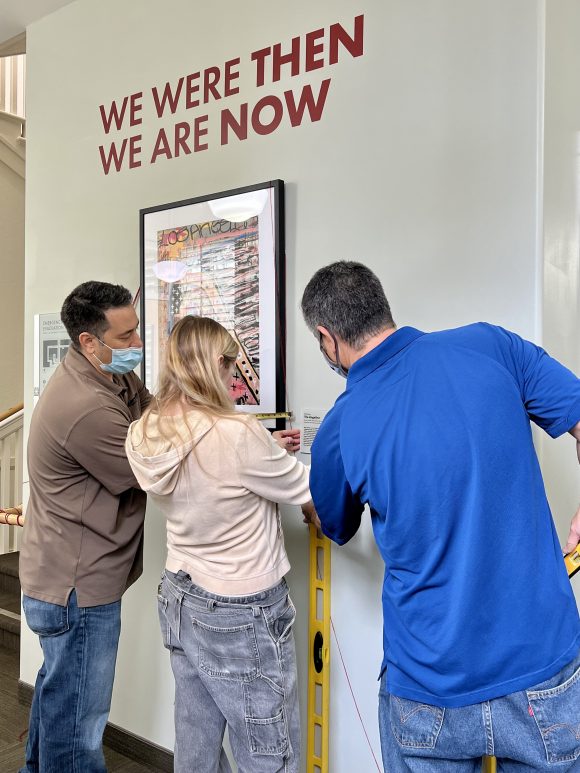WE WERE THEN, WE ARE NOW New Student Curated Exhibition
December 15, 2022
Students in Dr. Fiona Shen’s First Year Focus (FFC) class, “Exploring the Escalette Collection of Art: An Experiential Journey” recently installed a new exhibition in Roosevelt Hall, home to Wilkinson College of Arts, Humanities, and Social Sciences. “WE WERE THEN, WE ARE NOW,” is a student- curated exhibition created as part of Wilkinson College’s Engaging the World: Leading the Conversation on Ethnic Studies initiative.
The exhibition opens the floor to contemporary indigenous artwork in the Escalette Collection, featuring artists from the Akimel O’odham, Chemehuevi, Cahuilla, and Tongva tribes. Through photography, painting, mixed media, printmaking, and collage, these artists share perspectives and experiences that will enlighten and strengthen our connections with one another.
“One of the strongest elements of this course was its promotion of rising artists from many different backgrounds, giving a voice to people who would not have been discussed, heard, or seen in many other contemporary art spheres. What I found very rewarding was being able to care for and curate the artworks by [underrepresented artists] and present them to a larger audience,” said Chase Takamori, Business Administration ‘26.

Naomi by Cara Romero with sensory objects hung below and red string above, connecting it to the other works in the exhibition.
Throughout the semester, the students not only selected the artwork for display, but researched and created written and audio labels, designed a title and logo, and developed visitor activities. Designing the exhibition to stand out to visitors was particularly important to the students. Red string, draped along the hallway, was one technique the students used to bring attention to the exhibition – an idea borrowed from one of the artists in the exhibit, Mercedes Dorame, who uses red string to communicate a sense of interconnectedness. In the exhibition, the red string is seemingly drawn out from Our House Made of Spiderwebs by Mercedes Dorame to connect the artwork, the space, and the viewer in the exhibition.
Visitors to the exhibition will also notice two activities designed to increase engagement. The first is a selection of natural objects depicted in Naomi by Cara Romero hung just below the photograph. Visitors are encouraged to engage their senses – the roughness of the pine cone or the smell of cinnamon – as they look at how these sacred objects are represented in several of the artworks in the exhibition. The second activity is a world map designed for visitors to place a pin where they or their family had to come from to get to Chapman. Echoing Gerald Clarke’s The United States of Amnesia II, map, this activity reminds us that immigration has always been central to the American experience.
“The design ideas were really creative – I’m always happy when we can integrate interactive activities so that the exhibit isn’t a static viewing experience,” said Dr. Fiona Shen.
In addition to researching the artists and artworks in preparation for the exhibition, the students took a hands-on approach to learning the logistics of exhibit installation. Working with the Escalette Collection’s two art handlers, students learned the basics of art handling and art installation before measuring distances, hammering nails, and attaching the wall labels themselves. Watch a short video of the installation process here.
“This course encouraged me to think critically about contemporary art and the process of curating an exhibition by going step by step through all of the processes that are included in these. Seeing how hard the staff works and all of the detail that goes into each piece made me realize how passionate a person has to be about this subject,” said Ellie Bickelhaupt, Creative Writing ‘26
This exhibition is free, and open to the Chapman Community and visitors. In addition to the physical exhibition, there is also a digital companion to We Were Then, We Are Now, which contains additional label text, media, and sources for further research.
We invite you to explore all the works in the Escalette Collection by visiting our eMuseum.
Wilkinson College of Arts, Humanities, and Social Sciences is the proud home of the Phyllis and Ross Escalette Permanent Collection of Art. The Escalette Collection exists to inspire critical thinking, foster interdisciplinary discovery, and strengthen bonds with the community. Beyond its role in curating art in public spaces, the Escalette is a learning laboratory that offers diverse opportunities for student and engagement and research, and involvement with the wider community. The collection is free and open to the public to view.




